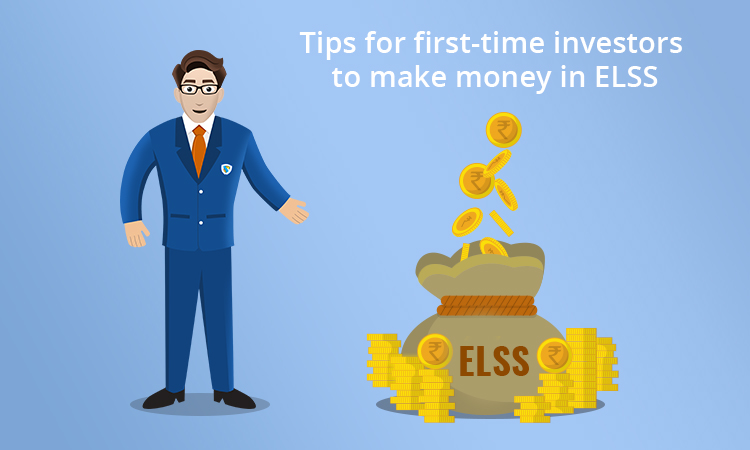Tips for First Time Investors to Make Money in ELSS?

As the tax-saving season has begun, there are a lot of people who are looking to invest in equity-linked saving schemes (ELSS), as there they can get equity-like profit or returns with the advantage of tax saving as well.
The awareness of mutual funds and the flexibility of this product seem to attract a lot of youngsters, particularly; we can also say first-time investors. Most of the new investors opt for ELSS as an investment because they think that it is easy to understand, have good returns and saves tax too. They are investing their full year's savings to save taxes and earn a little more profit.
But there are few mistakes as well which first timers do while investing in ELSS. Let's learn about it so that you do not do the same errors -
1) Focus not only on tax planning but also on financial planning
You should not just think about saving taxes but also focus on getting a return on that investment too. Just not solely think of tax planning when doing investment, doing proper research about where you are investing and how much would be the return should be your target.
When you are investing somewhere, check whether that investment scheme matches your needs or not? As all the tax saving schemes come with a lock-in period you do not have the liquidity to move your money when you want.
For example: Your money stays invested for a minimum of three years in ELSS investments, which is a long period, especially for equity portfolios to get profits and cultivate investor discipline. So, always plan in advance or hire a financial planner so that he can save your tax along with getting you more returns.
Read Related Blog: - Investment in ELSS: Tax Planning can’t get simpler?
2) Consider lock-in period of an ELSS fund
You should always check and review for how long you would want to invest your money. As in ELSS your money remains locked in for at least 3 years and rest stays up to you.
If we compare ELSS with all the other tax-saving schemes, ELSS mutual funds investment provide with the shortest lock-in period of 3 years. In other types of investments, it differs from 5 to 15 years.
One mistake which people usually do is to pull out the money they invested as soon as the lock-in completes. This is a big mistake. As the underlying asset here is equities, people should let the money invested there for a longer time zone for at least 5-7 years to get good returns.
3) Focus more on choosing SIP option
SIP is a great approach for ELSS investment and investors as the benefits of SIP are immense. The SIP route is without a doubt very easy and simple option as the investment you want to do can be parted into small amounts over the time span according to your wish.
As the investment can be as less as INR 1,000 per month and the lock-in period would be 3 years (for ELSS). This has made very easy for the investors but the final mode of investing would depend on the amount of money available and the risk-taking capability of an individual.
Also Read: Why Mutual Funds SIP schemes are ideal for building financial wealth?
If the person has a strong view of the market and is able to project how it might move, then selecting a SIP or lump sum is crucial to determine the final returns. It is a very convenient option which is easy to do and another benefit of it is that the probable investors look at it as a tool which inculcates savings. With such low investment amount, which is systematic in nature and only one-time registration is required, it becomes an effortless method of forced saving.
Benefits of ELSS investment over lump sum investment
An investor who do not have large amount of money (lump sum) in hand but has a fixed income every month, by way of salary or any other mode, he/she may invest through SIP mode in ELSS. The benefit of it is that you can invest in small amount as well, if you do not have too much money in hand.
You can invest in portions via ELSS but when you plan to do it through lump sum investment, then you need a lot of cash and it also calls for a big risk as you are investing all the money in one go.
By opting for ELSS, you tend to get into the mode of planned investing. You infuse the habit of doing small sum investments at regular intervals. By this way, investments would become an intrinsic part of tax planning for your-self. On the contrary, in lump sum you just invest once and have to wait for the profits and cannot invest once the rates are appropriate in the market.